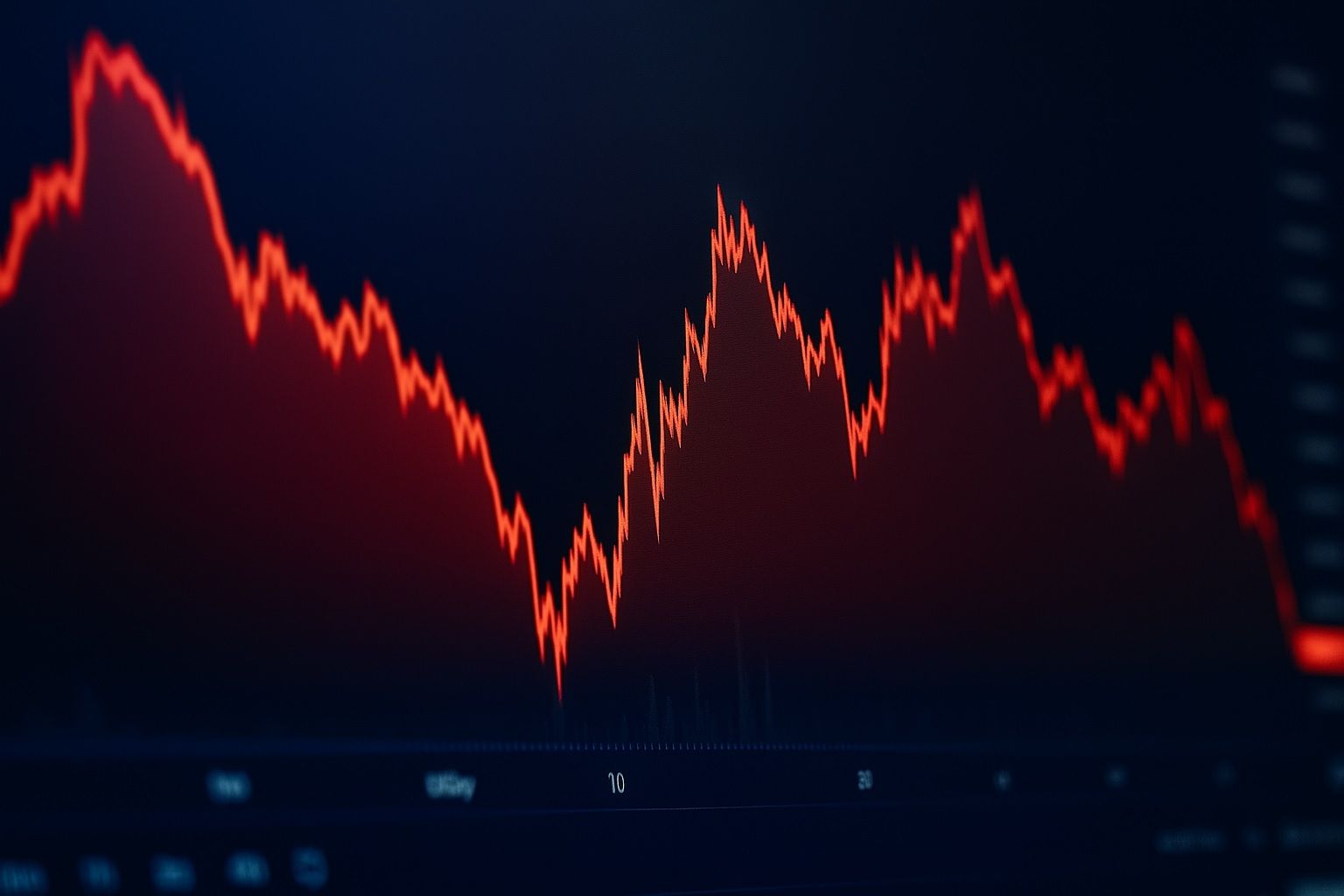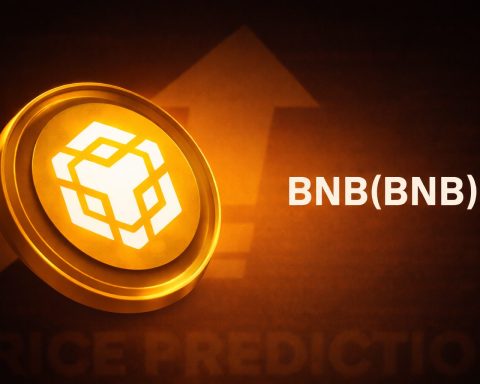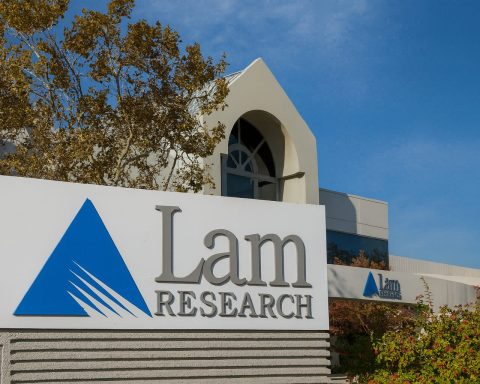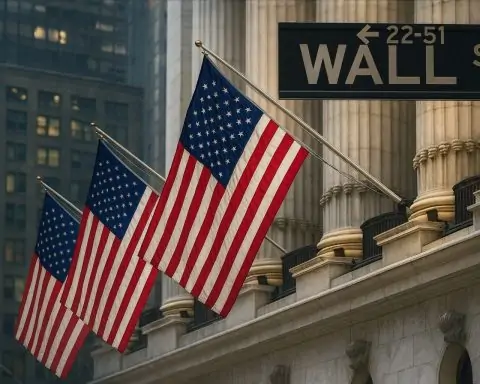- Market Divergence: The Dow Jones Industrial Average fell about 0.5% on Monday (down ~226 points), while the S&P 500 edged up 0.2% and the tech-heavy Nasdaq Composite rose ~0.5% [1]. Losses in health-care giants UnitedHealth and Merck (down 2–4%) weighed on the Dow, even as big-tech names lifted the Nasdaq [2]. Amazon jumped 4% after striking a $38 billion cloud partnership with OpenAI [3], and Nvidia climbed ~2% on U.S. curbs keeping its AI chips out of China [4]. Early gains reversed by midday Tuesday: the Dow swung from +134 points to –407 points, and the S&P gave up a +42 point rally to turn negative, as weak manufacturing data and interest-rate jitters spooked investors [5].
- Palantir’s Reality Check: High-flying AI software maker Palantir (PLTR) – up over 170% this year – tumbled ~8% after its third-quarter earnings. The company beat revenue estimates ($1.18 billion vs. $1.09 billion expected) and even raised its Q4 sales forecast, but investors were unimpressed [6] [7]. Palantir’s stock has surged roughly 1,000% in two years, and trades at an eye-watering ~250× forward earnings, far above Nvidia’s ~33× or Microsoft’s ~30× [8]. That lofty valuation and “sky-high” AI hype prompted profit-taking despite the solid results. Other AI-centric stocks sold off in sympathy – AMD sank ~2.7%, Oracle ~2.1%, Nvidia ~1.9%, and Amazon ~1.5% on Tuesday – reflecting broader skepticism about big tech’s rich pricing [9].
- Bubble Warnings on Wall Street: A growing chorus of experts is flashing warning signs that the market’s AI-driven rally may be overheating. The CEOs of Morgan Stanley and Goldman Sachs cautioned that equity markets could see a 10–20% correction amid stretched valuations [10]. “We should…welcome the possibility” of a 10–15% drawdown not driven by a crisis, noted Morgan Stanley’s Ted Pick, suggesting a pullback would be a healthy reset [11]. Famed “Big Short” investor Michael Burry has gone so far as to call the current AI boom “a speculative bubble mirroring the 2000 dot-com bust” [12]. Burry’s firm disclosed over $1 billion in put-option bets against high-flyers Nvidia and Palantir, arguing that massive AI spending and exuberant forecasts are outpacing real demand [13].
- Caution Signs Abound: Investors are growing anxious that the AI frenzy won’t live up to its hype in terms of tangible returns. JPMorgan analysts warn clients are uneasy about the rally’s “narrow market breadth”, noting a “global risk-off tone” emerging [14]. Trade Nation analyst David Morrison observed that “some are doubting whether AI can possibly live up to the hype in terms of future returns.” [15] The recent pullback in Meta and Microsoft shares – after both announced huge capital spending boosts for AI – underscores that skepticism [16]. Meanwhile, the Federal Reserve’s policy outlook has turned murky. Chicago Fed President Austan Goolsbee said he’s “uneasy with frontloading rate cuts” and finds inflation data “still worrisome,” advocating caution on easing policy [17]. The Fed did cut rates last week, but Chair Jerome Powell emphasized that further cuts are “not a sure thing” going forward [18]. With a U.S. government shutdown halting many official economic reports, markets are flying partly blind on data [19] – adding to volatility.
- Outlook – Volatile but Fundamentally Strong: The stock market sits at a crossroads. On one hand, corporate earnings have been robust – over 83% of S&P 500 companies beat forecasts this quarter [20] – and recent dovish signals (like cooling Treasury yields around 4.1% [21]) could support equities. Tech giants continue to invest aggressively in AI, and any genuine breakthroughs could justify some of the optimism. On the other hand, a handful of mega-cap tech stocks have led much of 2025’s gains, leaving the rally vulnerable if those leaders stumble [22]. “It’s definitely a market led by big tech…and it has been for almost this entire bull market,” notes Baird strategist Ross Mayfield [23] – a sign of thin leadership. Keith Buchanan of Globalt Investments warns that the market seemed primed for “a risk-off pullback even on the slightest disappointment,” given how far and fast valuations have run up [24]. With key events ahead – from major AI company earnings (chipmaker AMD reports later today) to crucial inflation readings – investors should brace for choppier waters. Many strategists expect at least a modest correction to “take some air out” of the AI trade [25], but not a full-blown crash. Barring a major economic shock, any pullback could be short-lived and potentially healthy [26], allowing earnings growth to catch up with prices. In the meantime, Wall Street’s message is clear: proceed with caution. The next few weeks will test whether the AI-fueled rally can find a second wind – or if reality is finally catching up with the hype.
Diverging Markets: Tech Strength vs. Blue-Chip Weakness
Stock trading to kick off November has been a tale of two markets. High-tech and growth stocks are extending their momentum, while old-line blue chips struggle. On Monday (Nov. 3), the benchmark S&P 500 and Nasdaq Composite managed to close higher – up 0.17% and 0.46%, respectively – even as the Dow Jones Industrial Average fell nearly half a percent [27]. This split reflects the radically different fortunes of tech-focused firms versus more traditional industries.
What’s driving the divergence? In large part, blockbuster tech news gave the Nasdaq a boost. E-commerce and cloud titan Amazon.com revealed a $38 billion deal with OpenAI – the maker of ChatGPT – to run OpenAI’s AI workloads on Amazon’s AWS cloud [28]. That surprise partnership instantly made Amazon a bigger player in AI and sent its stock surging 4% [29]. Meanwhile, chipmaker Nvidia – whose advanced processors are critical for AI – got a lift after U.S. President Donald Trump announced new export controls reserving Nvidia’s top GPUs for U.S. companies (to keep them out of China) [30]. Nvidia shares jumped ~2.2% on the news [31]. These developments fueled the Nasdaq’s rally, since Amazon and Nvidia are heavyweight components of that index.
In contrast, the Dow’s decline was largely due to slumps in a few of its 30 components. Notably, UnitedHealth Group and Merck & Co. – two healthcare giants – dropped 2–4% [32], enough to drag the price-weighted Dow into the red. Merck’s 4% tumble followed news of a costly acquisition (consumer health firm Kenvue) that concerned investors [33]. Likewise, Kimberly-Clark (maker of Kleenex and Huggies) plunged 14.6% after agreeing to buy Tylenol-parent Kenvue for $40 billion [34], exemplifying how big-ticket deals can hurt legacy stocks’ prices in the short run.
Early in the week, bullish sentiment was running high. “The Amazon deal and other M&A news have boosted the market,” said Ross Mayfield, investment strategy analyst at Baird, noting that investors also came in optimistic “after…positive news over the weekend, both about the China trade situation and some dovish Fed-speak” [35]. Indeed, U.S.-China trade tensions eased slightly as President Trump and China’s President Xi agreed to de-escalate tariffs [36], and some Fed officials hinted at a gentler interest-rate path. These factors set a positive tone that helped stocks rally strongly on Monday morning.
However, that optimism proved fragile. By mid-day Tuesday (Nov. 4), much of the market’s early strength had evaporated. A couple of catalysts shifted the mood:
- Weak manufacturing data: The October ISM manufacturing index came in at 48.7 (anything below 50 signals contraction), undershooting forecasts of 49.5 [37]. The index’s employment sub-gauge was a low 46.0 [38], confirming that U.S. factories are still struggling. This raised fears of a cooling economy and initially bolstered hopes for Fed rate cuts – but also underscored demand headwinds.
- Fed hesitation on rate cuts: In a Tuesday speech, Chicago Fed President Austan Goolsbee struck a hawkish tone, saying he’s “uneasy with frontloading rate cuts” and that inflation remains “worrisome.” He indicated he’s undecided about cutting rates at the next meeting and that “the threshold for cutting [is] higher” now [39]. Goolsbee’s stance poured cold water on the notion of quick Fed relief, despite the weaker economic data.
As these developments sank in, stocks recoiled. The Dow, which had been up over 130 points at Monday’s high, swung to a 407-point loss by mid-session Tuesday [40]. The S&P 500 also flipped from a solid gain to a modest loss [41]. Only the Nasdaq clung to a slim +0.2% uptick, far below its earlier surge (the index had been up over 250 points at one stage) [42]. In other words, morning gains bled away, illustrating how skittish traders have become. “Nerves are creeping in” as the market digests mixed signals, observed one analyst.
By Monday’s closing bell, some stability returned – the Dow’s loss trimmed to 226 points, and the S&P and Nasdaq managed to finish in the green [43]. But the intra-day whiplash was telling. It highlighted the market’s cross-currents: excitement over AI-driven growth on one side, and worry over valuations and macro risks on the other. This tug-of-war set the stage for what came next: a sharp focus on one of the market’s hottest – and possibly frothiest – sectors, artificial intelligence stocks.
Palantir and the AI Stock Hype Cycle
Few companies embody 2025’s AI-stock mania as much as Palantir Technologies. The data analytics firm has ridden the artificial intelligence wave to astonishing heights – and is now experiencing the turbulence that comes with such altitude. Palantir’s stock started 2023 in the single digits, and recently traded above $200 (post-splits), propelled by investor enthusiasm for its AI-powered software and a string of government contracts [44]. The share price is up roughly 170% in 2025 alone, and an incredible 1,000%+ in the past two years, outpacing even tech titans like Microsoft, Amazon, and Alphabet [45].
This meteoric rise meant sky-high expectations going into Palantir’s latest earnings. The company delivered on growth – reporting Q3 revenue of $1.18 billion, comfortably topping estimates of $1.09 billion [46]. It also issued an upbeat outlook, forecasting fourth-quarter sales above analysts’ targets [47] thanks to “rapid AI adoption” driving demand for its platforms. Under normal circumstances, such news might send a stock higher. Not this time.
Palantir’s shares plunged as much as 8–10% after the earnings release [48]. By Tuesday morning, the stock was on track for its worst single-day drop since mid-August [49]. What went wrong? In a word, valuation. After its massive run-up, Palantir had a market capitalization near half a trillion dollars – and was priced for perfection. Its forward price-to-earnings (P/E) ratio hovered around 240× [50], an almost unheard-of multiple. (For comparison, Nvidia – another AI darling – trades around 29–33× forward earnings [51] [52], and the broader Nasdaq 100 is about 25×.) This means even strong growth is “priced in,” leaving no margin for error. As one Wall Street strategist quipped about Palantir, “great business, uninvestable stock.”
Indeed, investors seized on any hint of less-than-stellar news. Palantir’s Q4 revenue forecast, while above consensus, apparently didn’t blow away the most bullish hopes [53]. Some analysts noted that much of Palantir’s AI-related revenue comes from government deals (which can be lumpy) and that its commercial AI sales are still nascent. With shares up 10-fold in two years, good wasn’t good enough – traders wanted perfection. The result: a “sell the news” reaction that wiped out roughly $40 billion in Palantir’s market value in one day [54].
Palantir’s drop also sparked broader tremors. It raised the question: Have AI stocks come too far, too fast? A slew of other tech names tied to the AI theme fell in tandem. On Tuesday, chipmaker AMD slid about –2.7%, database giant Oracle lost –2.1%, Nvidia dipped –1.9%, Amazon was off –1.5%, Broadcom –1.3%, and Meta Platforms –1% [55]. This across-the-board weakness suggested investors are rotating out of crowded AI trades, taking profits and reducing risk.
“Doubts are swirling” about whether these companies can justify their valuations and “deliver on their AI ambitions after spending billions” on the technology [56], as Business Insider observed. In Palantir’s case, the company is wildly expensive relative to its earnings (again, ~250 times forward profits), which led even some bulls to concede that expectations needed a reset. JPMorgan’s market intel team noted clients have been fretting about the sustainability of the AI boom, pointing out concerns over narrow market breadth (few winners carrying the market) and a “global risk-off tone” creeping in [57].
There’s also a sense that hype may be running ahead of reality. “Some are doubting whether AI can possibly live up to the hype in terms of future returns,” wrote David Morrison, senior market analyst at Trade Nation [58]. After all, tech history is littered with transformative innovations that took longer than expected to pay off. Palantir’s own CEO, Alex Karp, has been touting AI as a game-changer – but even he was moved to defend his company’s prospects amid the sell-off. (Karp reportedly called one prominent skeptic’s bearish bet “bats* crazy,” a colorful rebuttal to those predicting an AI bust.)
It’s worth remembering that volatility is not new for Palantir or its peers. Earlier this year, Palantir stock plunged ~40% from January to April during a broader market shakeout [59]. And in August, shares slid 18% after famed short-seller Andrew Left revealed he was betting against the company [60]. Each time, true believers bought the dip. Whether that happens again now may depend on if Palantir can continue proving its AI prowess – and if the overall market remains supportive.
For now, Palantir stands as a symbol of the AI rally’s excesses: a company with undeniable technological promise and rapid growth, yet one that may have run too hot stock-wise. Its post-earnings stumble has become a wake-up call that even the hottest AI plays aren’t invincible – especially when everyone is already piled in. As we’ll see next, that message is being echoed by some very influential voices on Wall Street.
Valuation Jitters and “Bubble” Warnings
The pullback in Palantir and other AI names is not happening in a vacuum. In fact, some of Wall Street’s biggest players have recently been sounding the alarm about overheated markets – particularly in tech.
In the past few days, the CEOs of Morgan Stanley and Goldman Sachs, two banks with fingers on the market’s pulse, issued rare public cautions. Morgan Stanley chief Ted Pick warned investors to prepare for a market drawdown of around 10% to 15%, citing “sky-high valuations” that may be due for a reset [61]. Goldman’s CEO David Solomon voiced a similar outlook, underscoring that after a massive run-up, stocks could pull back sharply with even a modest shift in sentiment [62].
These aren’t perma-bears or fringe commentators – they are leaders of major institutions, and their comments carry weight. While neither predicted an exact timing, the implication was clear: risk management is crucial right now. Notably, Ted Pick added that a correction need not be catastrophic; he suggested welcoming the possibility of “10 to 15% drawdowns that are not driven by some sort of macro cliff effect” [63]. In other words, a garden-variety correction – to deflate excess speculation – might even be healthy for the market’s longer-term health, so long as it’s not triggered by a serious economic crisis.
If the bank CEOs provided a polite tap on the brakes, Michael Burry slammed on them. Burry, the hedge fund manager famous for foreseeing the 2008 subprime meltdown (immortalized in The Big Short), has turned his skeptical eye toward the AI stock frenzy. In a flurry of social media posts and market moves, Burry warned that the current AI boom is a “speculative bubble” akin to the late-1990s dot-com mania [64]. He backed up his conviction with big money: regulatory filings reveal Burry’s firm Scion Asset Management has placed over $1 billion worth of bearish put options against two emblematic AI winners – Nvidia and Palantir [65].
Burry even drew historical parallels, noting how the telecom network glut of 2000 (where huge fiber-optic investments far outstripped actual usage) mirrors today’s surge in AI infrastructure spending [66]. He shared charts showing U.S. tech capital expenditures spiking to dot-com era levels [67], even as growth in cloud-computing demand appears to be slowing [68]. His takeaway: much of the AI boom is being fueled by a circular hype cycle – big tech companies investing in each other’s AI ventures, creating the perception of limitless opportunity, while real end-user demand remains unproven [69]. In a cryptic Halloween post, Burry quoted the movie WarGames: “The winning move is not to play” – implying that sitting out a bubble may be the wisest course [70].
These warnings are finding a receptive audience, given the market’s behavior. We’ve seen risk appetite suddenly recede in just the past 1–2 weeks. Alongside Palantir’s slump, other high-fliers like Tesla, Netflix, and smaller AI startups have lost altitude. The CBOE VIX volatility index – often called the “fear gauge” – spiked to a two-week high, indicating investors were buying protection in case of a sharper sell-off [71]. And flows into safe-haven assets like Treasury bonds ticked up as equity futures fell early Tuesday [72].
Even within the tech sector, some companies’ own actions have tempered enthusiasm. Meta Platforms (Facebook’s parent) and Microsoft recently revealed plans to dramatically increase capital expenditures for AI – pouring billions more into data centers and chips. Normally, investing in growth is positive, but the market reacted negatively; both stocks fell on that news [73]. It seems investors are growing wary of an “investment circle” where tech giants keep spending on each other’s AI ecosystems (Cloud companies funding AI startups that in turn buy more cloud services, etc.), potentially without near-term profits to show for it [74]. This dynamic can create a self-reinforcing bubble – until the moment it doesn’t.
All that said, not everyone is convinced we’re in bubble territory. Many analysts point out that 2025’s rally has been supported by real earnings growth (especially in sectors like semiconductors, luxury goods, and travel) and that the overall market P/E is elevated but not absurd by historical standards. Soft landing hopes – the idea that inflation can fall without a severe recession – are still alive, which could justify high valuations if they prove true. And importantly, a lot of the “froth” is concentrated in specific areas (AI, mega-cap tech), whereas other sectors (like utilities, banks, small-cap stocks) have lagged or even declined this year.
In essence, the market’s worries are very specifically aimed at the narrow leadership and possible over-exuberance in tech. As JPMorgan’s team noted, breadth is narrow – meaning relatively few stocks are driving index gains [75]. That can be a classic hallmark of a late-stage rally. It’s reminiscent of 1999, when the NASDAQ soared on the backs of a handful of dot-coms while many other stocks went nowhere. Eventually, the breadth issue resolved – violently – with the bubble bursting. Today’s cautious voices aren’t necessarily predicting the same fate, but they are urging vigilance.
To quote Keith Buchanan at Globalt Investments, “the market’s been moving higher… but at some point it seemed like it was kind of positioning for a risk-off pullback even on the slightest disappointment.” [76] Palantir’s earnings were that “slight disappointment,” and sure enough, here came the pullback. Now the key question is: will it deepen and spread, or will the broader bullish trend resume?
Macro Crosscurrents: Fed Policy and Economic Signals
Overlaying the market’s valuation debate is an uncertain macroeconomic backdrop. Investors are trying to parse mixed signals on growth, inflation, and Federal Reserve policy – a task made harder by unusual circumstances like a government shutdown.
First, the Federal Reserve: After raising interest rates aggressively to combat inflation, the Fed pivoted in late October by cutting rates – a move that many had anticipated to support the economy. However, Fed officials are not all on the same page about what comes next. As noted, Chicago Fed’s Goolsbee is hesitant to ease further with inflation still above the 2% target [77]. In contrast, Fed Governor Stephen Miran has argued current policy is “too restrictive” and has hinted at the need for more cuts if the economy softens [78]. This split in messaging has left traders unsure if another rate reduction will arrive in December or early 2026.
Fed Chair Jerome Powell didn’t clarify matters much at last week’s meeting either. Powell acknowledged progress in the inflation fight but emphasized that future rate moves will depend on incoming data, famously warning that further easing is “not a sure thing” [79]. That cautious stance disappointed those betting on a swift series of cuts (what some called a “Fed pivot party”). It also means markets are highly sensitive to each new economic data point – which leads to the next complication.
The U.S. is in the throes of a record-length federal government shutdown. By Nov. 4, the shutdown had tied the longest ever, and many government agencies that produce key economic reports (like the Bureau of Labor Statistics and Commerce Department) have been idled [80]. As Reuters notes, “official economic data remains scarce amid the ongoing government shutdown” [81]. For investors and Fed policymakers, this “data blackout” is problematic – they’re flying partly blind. Critical reports on jobs, inflation, consumer spending, etc. are being delayed, leaving private-sector surveys to fill the gap.
One such private report was the ADP National Employment release, due Wednesday Nov. 5. Investors hoped ADP’s numbers might shine a light on the labor market’s health [82] in absence of official payroll data. Similarly, purchasing managers’ indexes (PMIs) from the ISM and S&P Global have taken on extra importance. The manufacturing PMI, as mentioned, showed ongoing contraction [83] – a sign that rising interest rates and uncertainty (including from Trump’s tariffs, which remain partly in place) are weighing on factories [84]. Later this week, a services PMI and CPI inflation report (if released) will be parsed for clues on whether the Fed might resume cutting rates or stand pat.
Inflation, while down from 2022’s peak, is still above comfort level, especially in services and wages. That’s why some Fed officials like Goolsbee remain leery. But if economic activity clearly slows – as the ISM manufacturing data suggests – the Fed could feel pressure to stimulate again. This tension – inflation vs. growth, cut vs. hold – is contributing to market choppiness. As one trader noted, “The market is also waking up to the reality that more rate cuts might not be a sure thing,” and that realization “has grown muddled” with the lack of data and mixed Fed commentary [85].
In the meantime, bond yields have eased off recent highs. The 10-year U.S. Treasury yield is around 4.09% [86], down from ~4.5% a month ago. Lower yields often support tech stocks (making their high valuations a bit more palatable), and indeed the October rally in stocks coincided with falling yields. But it’s a double-edged sword – yields are dropping partly because investors fear a slowdown and are seeking safer assets. The bond market, in effect, is sniffing out economic trouble ahead, which equity investors can’t ignore.
Also worth noting: this week brings some unique events, like local elections in New York, New Jersey, and Virginia [87]. Normally, state elections don’t sway markets, but given the charged political environment, even these are on investors’ radar (e.g. any surprise outcomes could hint at broader national trends or policy shifts).
Finally, the backdrop includes international elements: the Reuters report mentioned the U.S. Supreme Court hearing a case on Trump-era tariffs [88], which could impact trade costs, and ongoing geopolitical issues (from wars to OPEC oil decisions) that lurk as wildcards. None of these have derailed the market yet, but they add to a general sense that the easy sailing may be over.
In summary, the macro picture is mixed. The economy is sending some positive signals (e.g. consumer spending has been resilient, unemployment remains low, Q3 GDP was strong) but also warning signs (manufacturing contraction, corporate layoffs in some sectors, and now, the potential drag from a government shutdown). The Fed’s reaction function is uncertain, and without clear data, both dovish and hawkish narratives are proliferating. This kind of environment can amplify market swings – good news might spark rallies (on hopes of a soft landing and earnings growth), while bad news might do the same (on hopes of Fed cuts), or conversely, any news could spark sell-offs if it upsets the delicate balance of expectations.
For investors, it means staying nimble. As one analyst put it, “there is a global risk-off tone” emerging [89] until there’s more clarity on where policy and the economy are headed.
Outlook and Forecast: Choppy Waters Ahead
After a blockbuster run for stocks through October, market volatility has returned, and the consensus is that we may be in for a bumpy ride to finish 2025. That said, there’s considerable debate over how deep any pullback might go – and whether the bull market powered by Big Tech and AI has another leg upward in 2026.
Many strategists argue that a cooling-off period is overdue, but not a bear-market collapse. The warnings from Morgan Stanley and Goldman Sachs – envisioning a 10–20% correction [90] – reflect the view that valuations need to normalize, especially for the hottest stocks. If such a correction occurred, it could simply reset prices to more reasonable levels without reversing the overall upward trend of the past years. In fact, some, like Morgan Stanley’s Ted Pick, see potential drawdowns as ultimately healthy, provided they’re not caused by a major crisis [91]. A pullback could flush out speculative excess (like poorly performing meme stocks or fringe crypto plays that tend to surge in ultra-bullish times), leaving the market in a stronger position for a sustainable advance.
On the other hand, the bullish camp notes that the market has proven resilient time and again in 2023–2025, climbing a “wall of worry” that included rising interest rates, geopolitical conflicts, and recession fears. Each dip along the way – whether the regional bank scare in 2024 or the inflation spike in 2022 – eventually gave way to new highs. They argue that as long as earnings growth continues and inflation keeps trending down, stocks can keep rising after any short-term shakeout. Notably, corporate earnings this quarter have been surprisingly strong, with over 83% of S&P 500 companies beating estimates [92]. That fundamental strength provides a cushion that wasn’t present during true bubbles like 2000 (when many tech firms had no profits at all).
One critical factor will be the Federal Reserve’s next moves. The current betting is that the Fed will stay on hold in December – given the mixed signals – but could resume cutting rates in early 2026 if inflation eases further. Any sign of the Fed leaning dovish again (for example, talk of rate cuts or actual cuts) could quickly reignite the “risk-on” trade, benefiting stocks and especially high-growth sectors. Conversely, if inflation surprises to the upside or the Fed hints at renewed tightening, it could spook both stocks and bonds significantly. In short, Fed communications and inflation data remain high-stakes events for the market outlook.
Another element to watch: market breadth. Will leadership broaden beyond the big tech/AI names? For a truly healthy rally, investors would like to see other sectors participate – e.g. financials, industrials, small-cap companies – rather than just a handful of mega-caps carrying indexes higher. There have been some tentative positive signs (for instance, certain consumer discretionary and travel stocks have done well, and parts of the market hit new 52-week highs recently [93]). But if breadth stays narrow or narrows further, it could be a precursor to a larger crack. As Baird’s Mayfield noted, this market has “been led by big tech semiconductors…for almost this entire bull run” [94]. At some point, even the mightiest tech stocks can falter – whether due to earnings misses, regulatory pressures, or just profit-taking – and that could drag the whole market down if nothing else picks up the baton.
In the near term, key earnings reports will likely set the tone. Later today, chipmaker AMD reports results, as does server maker Super Micro Computer (SMCI) [95]. Given both are central to AI infrastructure, their numbers and guidance could either calm or exacerbate the AI stock jitters. Strong reports might reassure investors that AI demand is translating into real sales and profits (potentially stabilizing stocks like Nvidia, AMD, etc.), whereas any hint of slowdown could feed the panic that the AI boom is already fizzling out.
Looking a bit further out, economic indicators like the October CPI inflation report (expected within a week, barring shutdown delays) and the November Fed meeting in December will be major inflection points. If CPI shows inflation cooling faster than expected, it would bolster the case for the Fed to ease and could spark a year-end rally. Conversely, a hot inflation print could do the opposite. The market’s reaction to each data point may be magnified by the current anxious mood – big swings up or down are possible.
Bottom line: most analysts foresee a period of increased volatility. We might see the S&P 500 and Nasdaq trade in a choppy range rather than hitting new highs straight away. The Dow and broader market could continue to lag if investors remain focused on only a few growth stories. But it’s also worth noting that major stock indexes only recently hit all-time highs last week [96]. Even after the past couple of down days, the Nasdaq and S&P are still up solidly for the year, and the Dow is roughly flat to slightly down (after giving back earlier gains) – so sentiment can shift quickly with any piece of encouraging news.
Investors should therefore be prepared for both outcomes. As the saying goes, hope for the best but plan for the worst. In practical terms, that means maintaining a diversified portfolio, possibly taking some profits on exceptionally high-flying stocks, and keeping an eye on quality fundamentals. The recent warnings from veteran financiers and the example of Palantir show the cost of complacency in frothy conditions. Yet, if the AI revolution turns out to be as transformative as promised, those companies leading it could resume their climb once the current shake-out passes.
For now, caution reigns on Wall Street. “Risk-off” is creeping back into the vocabulary. But given the strong undercurrent of innovation and economic growth this year, few are sounding an all-out retreat. The more likely scenario is a temporary cooling – a chance for the real winners to distinguish themselves and for latecomers chasing momentum to think twice.
In the coming weeks, keep watch on corporate outlooks (do tech CEOs remain bullish on AI spend?), Fed speeches (do officials soften their tone or stay hawkish?), and global factors (does anything unexpected upset the apple cart?). Any of these could tilt the market’s balance. As of early November, the market is at an inflection point: the euphoria of the AI boom is meeting the reality of earnings math and economic gravity. How that battle resolves will determine whether 2025 ends with a flourish for investors – or with a sobering dose of volatility.
Either way, it’s clear that after a red-hot summer, the stock market’s autumn has turned more unpredictable. Buckle up for a potentially wild finish to the year, as the AI story enters its next chapter and Wall Street debates just how much of that story is already written in the prices of stocks today.
Sources:
- Reuters – “S&P 500, Nasdaq end higher on Amazon-OpenAI deal; Fed path forward grows murky” (Nov 3, 2025) [97] [98] [99] [100]
- InvestingLive – “Stocks are bleeding with the S&P and Dow now in negative territory” (Nov 3, 2025) [101] [102] [103]
- Business Insider – “Wall Street is suddenly sounding the alarm on sky-high valuations as Palantir tumbles” (Nov 4, 2025) [104] [105] [106] [107]
- Reuters – “Wall St set to open lower after big banks flag market pullback risk; Palantir slides” (Nov 4, 2025) [108] [109]
- Reuters – “AI darling Palantir’s bull run stalls despite strong revenue forecast” (Nov 4, 2025) [110] [111]
- Business Insider – “Stock Market Today: PLTR stock drops 8% as fears of AI bubble spike” (Nov 4, 2025) [112] [113] [114]
- Benzinga – “Michael Burry Warns AI Boom Is Repeat of 2000’s Dot-Com Bust…” (Nov 4, 2025) [115] [116]
References
1. www.reuters.com, 2. www.reuters.com, 3. www.reuters.com, 4. www.reuters.com, 5. investinglive.com, 6. www.businessinsider.com, 7. www.reuters.com, 8. www.reuters.com, 9. www.businessinsider.com, 10. www.businessinsider.com, 11. www.businessinsider.com, 12. www.benzinga.com, 13. www.benzinga.com, 14. www.businessinsider.com, 15. www.businessinsider.com, 16. www.businessinsider.com, 17. investinglive.com, 18. www.businessinsider.com, 19. www.reuters.com, 20. www.reuters.com, 21. www.businessinsider.com, 22. www.reuters.com, 23. www.reuters.com, 24. www.reuters.com, 25. www.businessinsider.com, 26. www.businessinsider.com, 27. www.reuters.com, 28. www.reuters.com, 29. www.reuters.com, 30. www.reuters.com, 31. www.reuters.com, 32. www.reuters.com, 33. www.reuters.com, 34. www.reuters.com, 35. www.reuters.com, 36. www.reuters.com, 37. investinglive.com, 38. investinglive.com, 39. investinglive.com, 40. investinglive.com, 41. investinglive.com, 42. investinglive.com, 43. www.reuters.com, 44. www.reuters.com, 45. www.reuters.com, 46. www.businessinsider.com, 47. www.reuters.com, 48. www.businessinsider.com, 49. www.reuters.com, 50. www.businessinsider.com, 51. www.businessinsider.com, 52. www.reuters.com, 53. www.reuters.com, 54. www.reuters.com, 55. www.businessinsider.com, 56. www.businessinsider.com, 57. www.businessinsider.com, 58. www.businessinsider.com, 59. www.businessinsider.com, 60. www.businessinsider.com, 61. www.businessinsider.com, 62. www.businessinsider.com, 63. www.businessinsider.com, 64. www.benzinga.com, 65. www.benzinga.com, 66. www.benzinga.com, 67. www.benzinga.com, 68. www.benzinga.com, 69. www.benzinga.com, 70. www.benzinga.com, 71. www.reuters.com, 72. www.reuters.com, 73. www.businessinsider.com, 74. www.benzinga.com, 75. www.businessinsider.com, 76. www.reuters.com, 77. investinglive.com, 78. www.reuters.com, 79. www.businessinsider.com, 80. www.reuters.com, 81. www.reuters.com, 82. www.reuters.com, 83. investinglive.com, 84. www.reuters.com, 85. www.businessinsider.com, 86. www.businessinsider.com, 87. www.reuters.com, 88. www.reuters.com, 89. www.businessinsider.com, 90. www.businessinsider.com, 91. www.businessinsider.com, 92. www.reuters.com, 93. www.reuters.com, 94. www.reuters.com, 95. www.reuters.com, 96. www.reuters.com, 97. www.reuters.com, 98. www.reuters.com, 99. www.reuters.com, 100. www.reuters.com, 101. investinglive.com, 102. investinglive.com, 103. investinglive.com, 104. www.businessinsider.com, 105. www.businessinsider.com, 106. www.businessinsider.com, 107. www.businessinsider.com, 108. www.reuters.com, 109. www.reuters.com, 110. www.reuters.com, 111. www.reuters.com, 112. www.businessinsider.com, 113. www.businessinsider.com, 114. www.businessinsider.com, 115. www.benzinga.com, 116. www.benzinga.com










